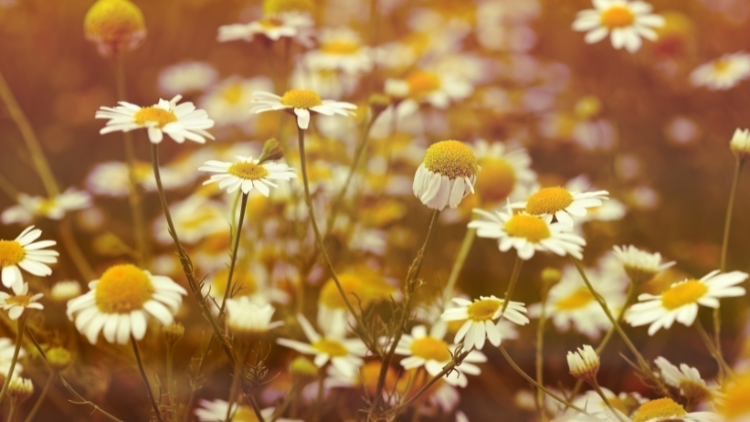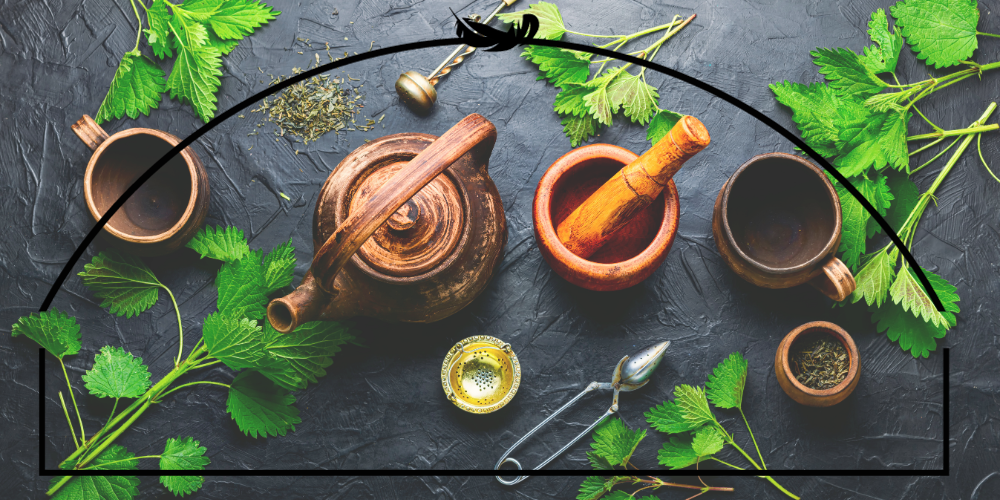Halloween season is wrapping up and like the good little witch that I am, I spent much of the time leading into it contemplating my ancestors. But also, like the complicated family lineage witch that I am, I find it hard to actually do traditional ancestor work with my blood relatives, so this month I looked at ancestral work through a different lens: plants.
Most folks don’t understand that the power of the root and dirt comes from the ancestors buried deep within the land. The power of their blood and bones mingles with the earth and draws forth the power of the roots that grow there. As the root lived, so shall it die and live again.
Moise, Working conjure, 11
Why and how are plants our ancestors? I know this isn’t the most common take people have when they think about ancestor work but I think that when we consider the nature of plants, ecosystems, and more indigenous ways of knowing, our ancestors have known that plants contain a wealth of teachings in them and are intrinsically linked to them. By observing their structure and nature, we can (and have) learn how to use them for healing. From a biological perspective, plants literally hold the genetics of our ancestors within them, growing as they do, right out of the land where our ancestors (human and others) nourish them. Plants work in a timeless way, some evolving and adapting more quickly to the changes around from one generation to the next, while others mark time more slowly, with our life cycle being merely a blink (trees). And science has shown us that plants do communicate with one another, sending stress signals through their roots, or growing towards one another in community. Not only do plants heal us and the earth; they also react chemically to alter themselves in response to their habitats. And when you sit with them long enough, they can teach you a great many things about yourself and the world around you. The more you learn about plants, the more amazing they truly are. Not only do they provide for us, they provide for us in such abundance if we let them and ask for so little in return. And no plant taught this me as much as chamomile.

German chamomile (Matricaria recutita) specifically.
As someone of Dutch and Scottish heritage, this is a plant that grows naturally in that region where my mother was born (the Netherlands), and has become naturalized in many others. Of course there is a wealth of information about this plant out there in western herbalism, but I wanted to delve a little deeper into the lore around it and I’m pleased to say that it was a fascinating exploration that ironically led me back to the gods.
I’m not going to do a Materia Medica of Chamomile as there are plenty of them out there. This is, after all, a very popular plant. Instead I’d rather talk about how this plant led me to exploring the runes again (26 years after my initial explorations) and back to Anglo-Saxon lore.
Like I mentioned, there’s a wealth of info about chamomile out there. As an aspiring herbalist, I diligently noted the most common of it down. Most of it focused on what we commonly associate with the plant: that it is a soothing healer. But interestingly enough, this plant is associated with fire and water, is solar in nature, and can be used to soothe skin conditions as well as, in large quantities, stir up our internal fires.
Despite these uses, we rarely explore how it helps the skin or the bladder/uterus, focusing instead on how the tea will calm us and settle our digestive fires. Even in Alchemy, we see this plant as a gentle healer despite being linked with the Sun. Yet, in large quantities or when steeped too long, chamomile can turn bitter or aggravate a fiery constitution.
When I started looking at how chamomile was used to care for the genital/urinary areas of our body, I quickly realized this information was more prevalent in the Unani (Persian/Arabic) practices with Gul-e-Babuna (chamomile in the Indian subcontinent), In fact, common western herbalism tends to overlook how this plant is linked to the genitals (kidneys, gonorrhea treatment, bladder stones, and menstrual cramps). You’ll come across the occasional mention of chamomile being good for easing menstrual pains, but this is not what we most commonly think of when we think of this plant.
When we look at chamomile in Northern lore, it is considered to be one of Odin’s nine herbs, as identified in an old Angl0-Saxon charm, the Nine Herb Charm, and was used to help fight off poisons and disease. In the charm, chamomile is called Mægðe (Maythe in more modern English). It was this link with the Nine Herb charm that led me down a path of exploring the herbs identified in a general sense, which then led to the runes.
As someone who started really studying the occult with the runes, it’s an amusing full circle journey, bringing with it a different kind of appreciation. Part of the reason I stopped reading the runes all those years ago was because I found them hard to recall and hard to read. I thought tarot would be easier to read because of the imagery – and it was and wasn’t. The irony in this though is that I spent years learning the systems that inform tarot, gradually building my knowledge of numerology, western esotericism, and Kabbalah – all of which make the runes actually easier to understand when I look at them now. Ur (Runes) and Aleph (Hebrew) may look very different but the logic behind them are not so different: both are cattle of some form (wild or domesticated). The same can be said for Beth (Hebrew) and Oethel (Runes), which have to do with homes or estates. Suddenly, coming back to the runes is not only easier, but incredibly fascinating when you start looking at how the Phoenician alphabet worked it’s way through Europe and European writing systems, including the Runes and the Hebrew alphabet, which can explain why some of the same meanings might exist between systems. See the chart below to see how we can trace back our alphabet (you can go here to compare it to the runes :

How is this related to chamomile? Well ultimately it’s not. It’s only related because it’s the rabbit hole my journey took me down because of the Nine Herb Charm (and I do love a good rabbit hole). But as someone who spends a lot of time thinking about colonialism and appropriation, it sheds a new light on the history of our language and how the two systems within esoteric divination practices share some common ancestry. It also makes you wonder about the story of Odin on the World Tree but that’s a different exploration for another day!
Coming back to chamomile, I spent a good part of the month working with chamomile that I harvested from my garden. From drinking tea to making skin products, I spent a lot of the month of October (or the new moon cycle in Libra) working with this plant ally.
While working with this plant, I spent a lot of time thinking about how we keep looking for the next exotic new thing, always fascinated with the newer, shinier plants, objects, and discoveries. And yet, not only are some of the tried and true plants that my ancestors used (think many of the herbs in the Nine Herb Charm) well beloved because of their longstanding effectiveness, many of the plants that grow abundantly in our bio-regions are largely overlooked for those flashier plants. For example, Goldenrod which grows in wild abundance in my area, is hardly ever used in common skin care products and yet, is incredibly good for the skin as an antibacterial astringent. All this to say, my work with chamomile this month has led me back to my roots, back to my back yard, and the reminder that our truest ancestral relationship is the one that we nourish and is right around us.

